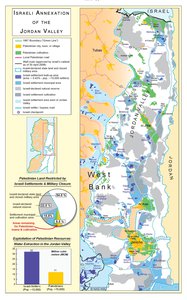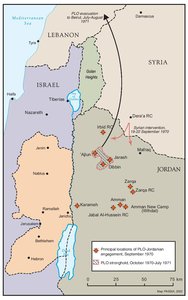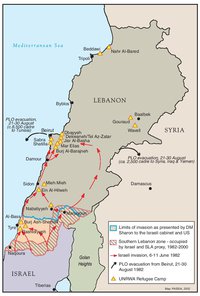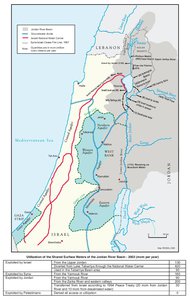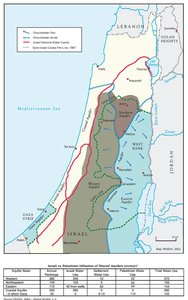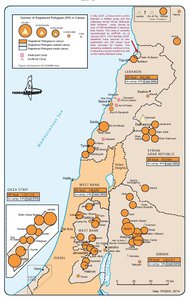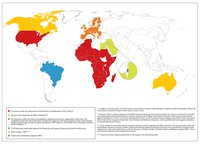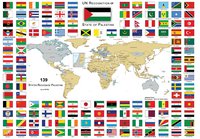ISRAELI ANNEXATION OF THE JORDAN VALLEY
Map Details
The Jordan Valley is a stretch of land that extends over 2,400 km2 from the Dead Sea in the south to Bisan in the north, along the border between the West Bank and Jordan and entirely lying below sea level. It accounts for 28.5% of the total West Bank territory. Some 87% of the Jordan Valley lies in Area C, comprising approximately 42% of all Area C, and is thus under full Israeli control. The remainder - designated as Areas A or B - includes enclaves of Palestinian communities and the city of Jericho. The Jordan Valley is the most fertile and resource-rich area of the West Bank, with key land reserves for natural expansion. It is known for its rich agricultural production, warm climate, abundant water resources, and also attracts tourism with over 80 historical and cultural sites. Since the beginning of the Israeli occupation in 1967, successive Israeli governments have pursued various measures to annex this territory de facto. In violation of the basic principles of international humanitarian and human rights law, Palestinians are effectively prevented from developing their communities, their homes are systematically destroyed, they are denied access to water, and their freedom of movement is severely restricted. Today, there are 30 Israeli settlements and nine illegal outposts in the Jordan Valley with a settler population of approximately 11,000. Moreover, about 20% of Jordan Valley land have been 26 declared nature reserves (only four are open to the public), and Israel has instituted a regime of permits and harsh restrictions on the movement of Palestinians, who must pass through four checkpoints, eight dirt mounds, six trenches and four agricultural gates. Palestinians who do not reside in the Jordan Valley are not allowed to enter the area. Some 46% of the Jordan Valley land is declared closed military zones from where Palestinians communities were ordered to leave. As a consequence of these policies, the Palestinian population in the Jordan Valley has decreased from 320,000 people in 1967 to 56,000 people in 2011. Some 54% of the Jordan Valley territory is currently declared ‘state land’ and used for military purposes while, respectively, 22% and 15.5% of the Jordan Valley are declared either conservation areas or are used for Israeli settlement and infrastructure projects. Despite the fact that only 8.5% of the territory in question remains available for Palestinian towns and cultivation, Israel is intensifying its efforts to curb residency for Palestinians. Unlike East Jerusalem, where annexation is an officially-declared policy, Israel’s silent illegal policies in the Jordan Valley, i.e. displacement and depopulation of Palestinian communities as well as increased isolation of the area from the rest of the West Bank, aim at uprooting Palestinian populations from Area C and transferring them to Area A and contribute to what is effectively becoming the valley’s de-facto annexation into Israel. In fact, supporters of these policies have pointed out that there is nothing that should prevent Israel from annexing the Jordan Valley completely, unlike the 2.5 million Palestinians in the West Bank, the 60,000 Palestinians living in the Jordan Valley won’t pose a demographic problem. While former Israeli Prime Minister Ehud Olmert offered in his 2008 peace plan to evacuate Jewish settlements in the area and return the Jordan Valley to the Palestinians in exchange for security guarantees, current Prime Minister Benjamin Netanyahu has repeatedly argued that security considerations would preclude an Israeli withdrawal from the Jordan Valley however a peace agreement with the Palestinians may look like. He unequivocally declared that “Israel will never cede the Jordan Valley. Israel would never agree to withdraw from the Jordan Valley under any peace agreement signed with the Palestinians. And it‘s vital - absolutely vital - that Israel maintain a long-term military presence along the Jordan River.” A number of mediators have suggested several proposals such as the deployment of UN peacekeepers or NATO troops to police the Jordan Valley and reassure Israel were not deemed sufficient. Others have suggested land-leasing schemes to let Israel remain in the Jordan Valley for a decade or so, to build confidence - they hope - between Arab and Jews. However, Netanyahu demands Israeli military presence along the entire valley for dozens of years, thus justifying Palestinian fears of an ‘endless occupation’. Indeed, it seems more likely that if there were to be a future Palestinian state at all, Netanyahu’s vision of this state is one being surrounded indefinitely by Israeli controlled territory along the Jordan Valley.

